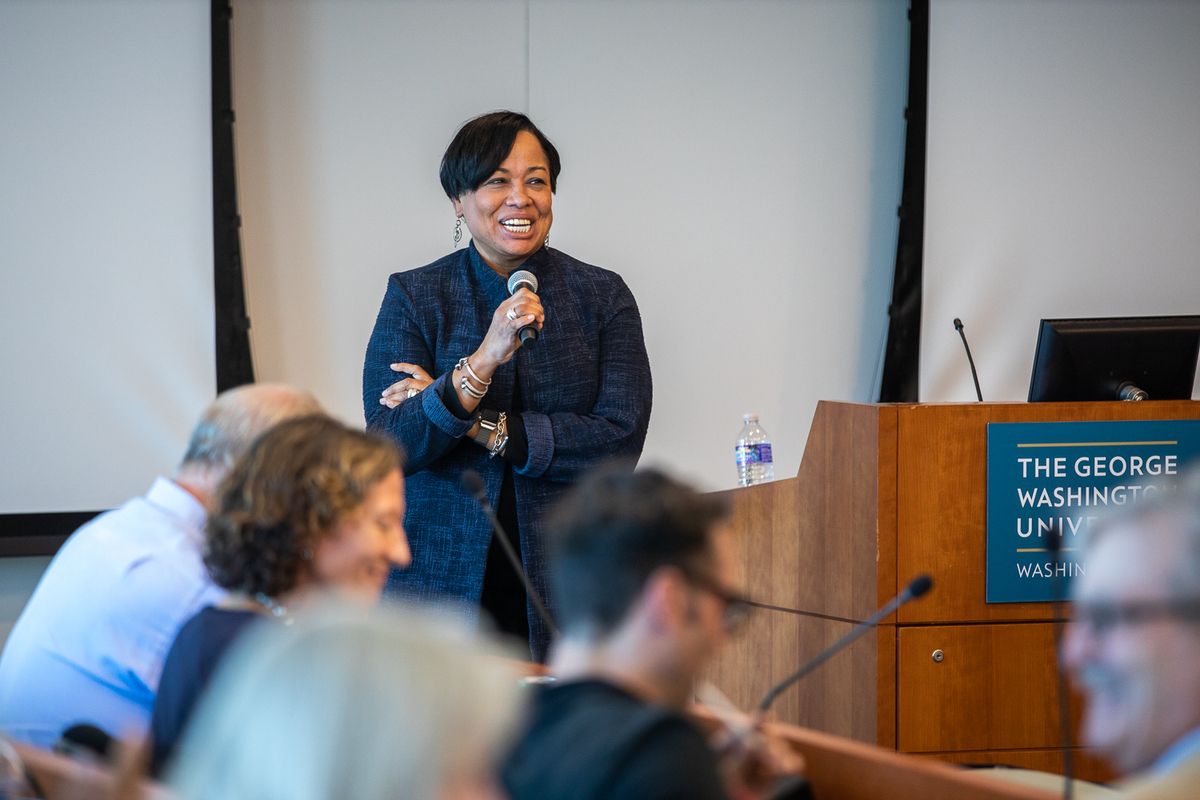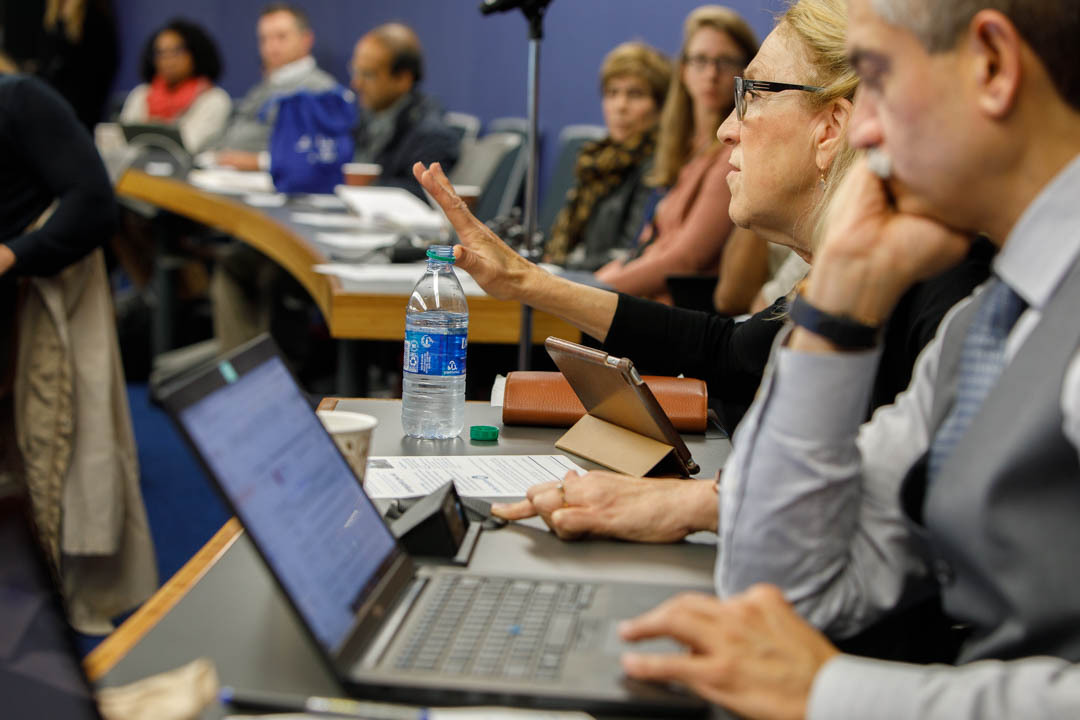The Faculty Assembly on Tuesday engaged in spirited discussion on the strategic planning process with President Thomas LeBlanc, noting concerns related to faculty engagement and the plan’s objectives to decrease the on-campus undergraduate population and increase the percentage of undergraduate science, technology, engineering and mathematics (STEM) majors.
By vote, the faculty approved a petition requesting more information and asking for more involvement of the Faculty Senate and its committees throughout the planning process.
The Faculty Senate Executive Committee will discuss the petition at its next meeting, chair Sylvia Marotta-Walters said.
In his remarks, Dr. LeBlanc provided context on the two objectives.
Decreasing the undergraduate population, Dr. LeBlanc said, reverses a trend of unsustainable growth over the past few years that has strained resources and led to complaints from students, and it will allow the university to improve the on-campus, undergraduate student experience.
It also helps the university remain under a student population cap imposed by the District and anticipate changes to higher education admissions trends that could affect the students GW would be able to enroll in the future.
The STEM objective, Dr. LeBlanc said, responds both to students’ “organic demand” and the need for GW to respond to an increasingly technological society.
Additionally, it builds on steps the university already took to expand its footprint in STEM, like the construction of Science and Engineering Hall, and will be a “differentiator” for GW among its peers, Dr. LeBlanc said. It also brings GW in line with the minimum percentage of STEM majors at private research universities outside of the District of Columbia while broadening conversations and collaborations on GW’s campuses that will enhance GW’s traditional strengths.
Still, members of the faculty questioned whether there would be negative effects as a result of either of the objectives.
Associate Professor of Physics Harald Griesshammer noted that tuition discount rates for STEM students tend to be higher than for non-STEM students, leading to concerns that increasing GW’s undergraduate STEM majors, while decreasing its on-campus undergraduate population would result in lower-than-expected revenue.
Dr. LeBlanc said many of these types of questions have been built into existing models that explore the effects of changing variables in admissions. The tuition discount rate for STEM students would eventually decrease, for example, as GW gains a reputation for strength in those areas.
He also said that concerns raised by faculty and other stakeholders are essential to refining those models because they reinforce the importance of other variables—a focus on ensuring diversity, for instance, which is one of the university’s core values.
“Our diversity is not going to go down one iota as a result of this,” he said.
Some faculty expressed reservations about the timeline, citing Dr. LeBlanc’s statement that GW “is not experiencing a crisis.”
But the timeline’s apparent abbreviation might be misleading, Dr. LeBlanc said, given the five-year nature of the plans in question.
The on-campus undergraduate population reduction will be achieved by slightly reducing the size of each of the next five freshman classes admitted to GW. Undergraduate STEM majors could be increased through the new Bachelor of Science degree in the Elliott School of International Affairs and by modest growth in existing programs like engineering, physics and pre-med.
Dr. LeBlanc also underscored that while the strategic plan will have a five-year timeframe, admissions decisions occur on an annual basis and course corrections can occur if needed.
“We reserve the right to be rational,” said Dr. LeBlanc, noting that if needed, adjustments can be made along the way.
Ultimately, the undergraduate and STEM objectives will continue to be discussed among the GW community, and there are many ways to achieve these and other goals, Dr. LeBlanc said.
“I welcome the conversation,” he said.
Dr. LeBlanc said faculty will lead the development and implementation of the plan. The university will provide any information the four faculty-led strategic planning committees need to do their work, he added.
The four committees—world-class faculty, high-quality undergraduate education, distinguished and distinctive graduate education and high-impact research—are holding public discussions and gathering input to make draft recommendations to the GW Board of Trustees in February 2020, so that initial ideas can influence the budget process for fiscal 2021. The committees will continue to refine their plans during the spring and will share their final recommendations with the board in May.
The annual assembly also featured introductions of new faculty from across the university and remarks by Provost Forrest Maltzman, who gave an emotional final speech as provost and received a standing ovation.
“I think one of the most critical [relationships] for any provost is actually with the faculty,” Dr. Maltzman said. “At the end of the day…it takes the faculty to go ahead and move the needle.”
Dr. Marotta-Walters closed the assembly by urging faculty to get involved in the strategic planning process through in-person events or by providing feedback to committees online.
Three of the four committees have already begun to hold public forums. The High-Quality Undergraduate Education Committee will hold its first public forum on Oct. 29. More information about upcoming engagement opportunities will be shared with students, faculty and staff by email, GW Today and on the strategic planning website.




